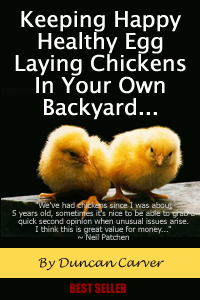Well, for many of us it’s that time of year again; molting time. I’ve been getting a lot of questions about how your flocks are suddenly dropping their feathers and you’re concerned. Because we have so many new chicken farmers joining us each month, I thought it would valuable to review the molting process
Let’s start with the basics; molting is the process of feather loss and re-growth.
It is a normal, natural and beneficial process.
A hen that has molted is hardier and not as prone to disease.
After a molt, you will likely see a reduction in the number of eggs your hens lay but the quality of the eggs increases and they are usually larger.
During a molt, a hen will slow down and even stop laying eggs, giving her reproductive tract time to rest and rejuvenate. It is also a time for her to build up her nutrient reserves that would normally be used to produce eggs.
Most adult hens will molt once a year, some will molt twice each year and very few will molt once every two years.
Before coming into lay, an adolescent hen will go through 3 partial and one full molt. These molts are different than our topic today.
Most molting takes place in the fall.
There is a misconception that cold weather causes a molt but it is actually the reduced sunlight that gets the process going.
So in the last month or so, I’ve heard from quite a few of you in the Northern Hemisphere wondering what’s happening to your flock.
Feather loss will happen in a particular order.
You will see a loss of feathers starting on the face and head. After that comes the neck, breast, body, wings and finally the tail.
If you’re seeing feather loss that does not follow the above pattern, you are not seeing a molt. Feather loss around the vent can be an indication of mites.
Balding spots on the back of the neck and back could indicate that she’s spending a little too much “time” with an aggressive rooster.
The order of feather loss is about the only thing that you can absolutely count upon when it comes to molting, the other aspects will vary from breed to breed and from bird to bird within a particular breed.
For instance, a hen (especially of the super-layer breeds) may not stop producing eggs completely during their molt but will very likely slow down significantly.
Another hen may lay well into the molt, with egg production slowing only once the feather loss has reached the wings and tail.
Another breed may stop laying the day the first feather hits the ground.
However, the length of the molting process is a good indicator as to whether a particular hen is a prolific layer.
A fast molter is a good layer, a slow molter does not produce as many eggs.
In fact, you might walk out one day to find a pile of feathers and a nearly bald hen, rest assured that she is one of your best layers.
This is a hen that is re-growing feathers at the same time she’s loosing them. She’ll likely complete her molt in just two to three months.
If you need to make decisions about which hens to cull from your flock, choose the slow molters. Not only do they not produce as many eggs but they will be out of commission longer due to a slower completion of the molt.
Understand that growing all those new feathers is hard work. Don’t be concerned if your flock seems quieter than normal. It’s not uncommon for a hen to even seem embarrassed at her feather loss, especially if she’s loosing feathers rapidly.
Extra protein in the diet, high in amino acids, will aide new feather production. Feeds high in oils will help the new feathers along as well.
It’s important to understand that when new feathers are coming in, you should avoid handling your flock as much as possible. They will find it very painful during this time. Hold off on picking them up and wait until their further along in the process.
Give them time, good nutrition and as always, good sanitation and you’ll be back to collecting eggs a lot of eggs in no time.
I hope this has been helpful to those of you who are witnessing this natural process for the first time.



Do isa browns lose a feather a day when laying?